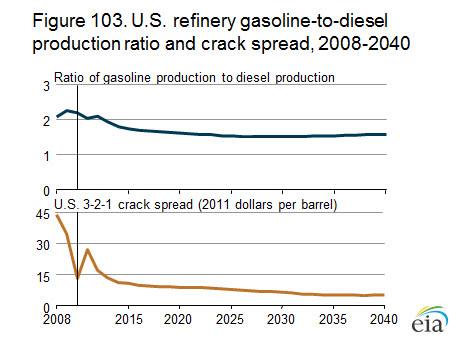In the US, that is simply not close to the truth.
PBR Source:
http://www.eia.gov/coal/nymex/
Posted on 10/15/2012 10:18:57 AM PDT by Snuph
President Obama is campaigning as a champion of the oil and gas boom he's had nothing to do with, and even as his regulators try to stifle it. The latest example is the Interior Department's little-noticed August decision to close off from drilling nearly half of the 23.5 million acre National Petroleum Reserve in Alaska.
The area is called the National Petroleum Reserve because in 1976 Congress designated it as a strategic oil and natural gas stockpile to meet the "energy needs of the nation." Alaska favors exploration in nearly the entire reserve. The feds had been reviewing four potential development plans, and the state of Alaska had strongly objected to the most restrictive of the four. Sure enough, that was the plan Interior chose.
Interior Secretary Ken Salazar says his plan "will help the industry bring energy safely to market from this remote location, while also protecting wildlife and subsistence rights of Alaska Natives." He added that the proposal will expand "safe and responsible oil and gas development, and builds on our efforts to help companies develop the infrastructure that's needed to bring supplies online."
The problem is almost no one in the energy industry and few in Alaska agree with him. In an August 22 letter to Mr. Salazar, the entire Alaska delegation in Congress—Senators Mark Begich and Lisa Murkowski and Representative Don Young—call it "the largest wholesale land withdrawal and blocking of access to an energy resource by the federal government in decades." This decision, they add, "will cause serious harm to the economy and energy security of the United States, as well as to the state of Alaska." Mr. Begich is a Democrat.
(Excerpt) Read more at online.wsj.com ...
In the US, that is simply not close to the truth.
PBR Source:
http://www.eia.gov/coal/nymex/
So, you want to trust the government, the same government that has been pushing and subsidizing the sub-bituminous coal industry?
Your article says that the sub-bituminous coal has a range of BTU values. That’s because it is a mixture of lignite and Bituminous coal. If you test a piece of bituminous coal you get a higher value than if you pick up a piece of the lignite. The true value is something in between,
Why do you think that Austalian mining companies are pulling back? Why do you think that the price of sub-bituminous coal is dropping precipitously? It doesn’t trade on the same market as real coal. It is not real coal.
I do know of a power plant that was built to run sub-bituminous coal, though. It requires a very expensive rebuild of the power plants to make the switch. This one happens to be a new plant and they haul the sub-bituminous coal all the way from Wyoming, instead of using the real bituminous coal from closer mines. They should have used natural gas.
So, you want to trust the government, the same government that has been pushing and subsidizing the sub-bituminous coal industry?
Your article says that the sub-bituminous coal has a range of BTU values. That’s because it is a mixture of lignite and Bituminous coal. If you test a piece of bituminous coal you get a higher value than if you pick up a piece of the lignite. The true value is something in between,
Why do you think that Austalian mining companies are pulling back? Why do you think that the price of sub-bituminous coal is dropping precipitously? It doesn’t trade on the same market as real coal. It is not real coal.
I do know of a power plant that was built to run sub-bituminous coal, though. It requires a very expensive rebuild of the power plants to make the switch. This one happens to be a new plant and they haul the sub-bituminous coal all the way from Wyoming, instead of using the real bituminous coal from closer mines. They should have used natural gas.
It is not just that article. And sub-bituminous coal is produced in places other than Powder River Basin in the US.
If you would like another source, how about Purdue University?
Just like crude oil, it doesn't come in discrete steps of quality. Each field is a little different. We categorize into broad quality descriptions like bituminous, heavy crude, etc. But the reality is it exists in many tiny steps of quality from field to field. We draw a line around groups to help define what we are talking about.
That depends on how clear your crystal ball is for predicting energy prices.


I know full well that sub-bituminous coal is produce outside of the PRB, but the PRB is what they want to export though WA and Oregon. It is the Peabody coal people who claimed that the price was $20 at the end of 2011 and it is now, $10.25, up from $8.50, according to Bloomberg. At those prices, it costs more to transport the coal than it is worth.
Frankly, it would make more sense to use the PRB coal in the US than to ship it to China. China has many sources of coal at lot closer than Wyoming. We just don’t want to be burdened with a horrible, dirty coal terminal, which is planned to be built to the cheapest standards, with no wind breaks or covered coal piles.
Disclaimer: Opinions posted on Free Republic are those of the individual posters and do not necessarily represent the opinion of Free Republic or its management. All materials posted herein are protected by copyright law and the exemption for fair use of copyrighted works.